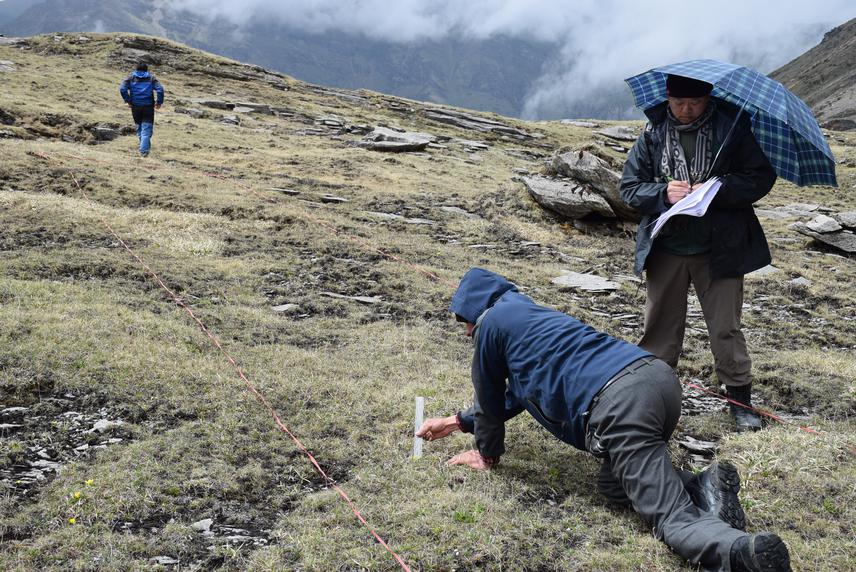Purna B. Chhetri
The main aim of the project is to establish network of observation research plots to study the population dynamics of Ophiocordyceps sinensis in alpine region of Bhutan Himalayas. Generate base line data on the population dynamics of O.sinensis from all alpine regions and will be pivotal for prescribing the harvest regulations for the collectors and will be basis for conservation and sustainable management of the species.

The insect-pathogenic fungus Ophiocordyceps sinensis (Berk.) Sung et al. (also known as Cordyceps sinensis) is harvested over the alpine zone of trans-Himalayas and Tibetan Plateau as a highly prized tonic in traditional Asian medicine. Over the years its financial value has increased significantly. This is causing considerable twist to local economies, because of high price the rate of harvesting is increasing and there is widespread concern that the current rate of collection is unsustainable.
In Bhutan, it had been considered as green gold amongst the renewable natural resources. It was sold up to USD 25, 000 per Kg in 2014.
It is protected under Schedule 1 in Nature and Conservation Act 1995. However, due to lack of income opportunities for the highland population, in 2004 His Majesty the fourth king had issued Royal Degree legalizing the collection of Ophiocordyceps sinensis to those people residing in alpine region of the country. However, there was no previous experienced or research dealing with the species, there was practically very scanty knowledge to manage the species in sustainable basis in the country. To fulfill the knowledge gaps, Research and Development Centre, Yusipang started a research project in collaboration with Darwin Initiative U.K in 2006 in Namna, Western Bhutan, to explore different aspect of population dynamics of this insect fungus for a period of three years.
The researchers could monitor the population of O.sinensis for a period of two years from early spring to beginning of autumn in Namna, Western Alpine region. Based on two years data, the researchers concluded that the peak flushing period for the insect fungi is on the month of June. Accordingly the Department of Forest and Park Services (DoFPS) had issued official circulations allowing collectors with permit to collect for this period. The one month allowable collection period was applied across O.sinensis growing region and this one month collection is valid till date, without considering the regional differences in flushing period.
There are conflicting reports that the month of June is not appropriate to harvest the O.sinensis to other alpine region especially central and eastern regions. In some instances the flushing period is early and in others it is said to be later than what is prescribe. The single most cited reason to improve the quality of the O.sinensis for better price was to vary collection timing across the region.
This research will enable the establishment of permanent observations plots across all region to understand the ecology, biology and population dynamics of the Ophiocordyceps sinensis across the alpine region of Bhutan. A proper understanding of the ecology biology and population dynamics of the species will help to formulate sustainable harvesting guidelines in this fragile Himalayan ecoregion for this important resource.